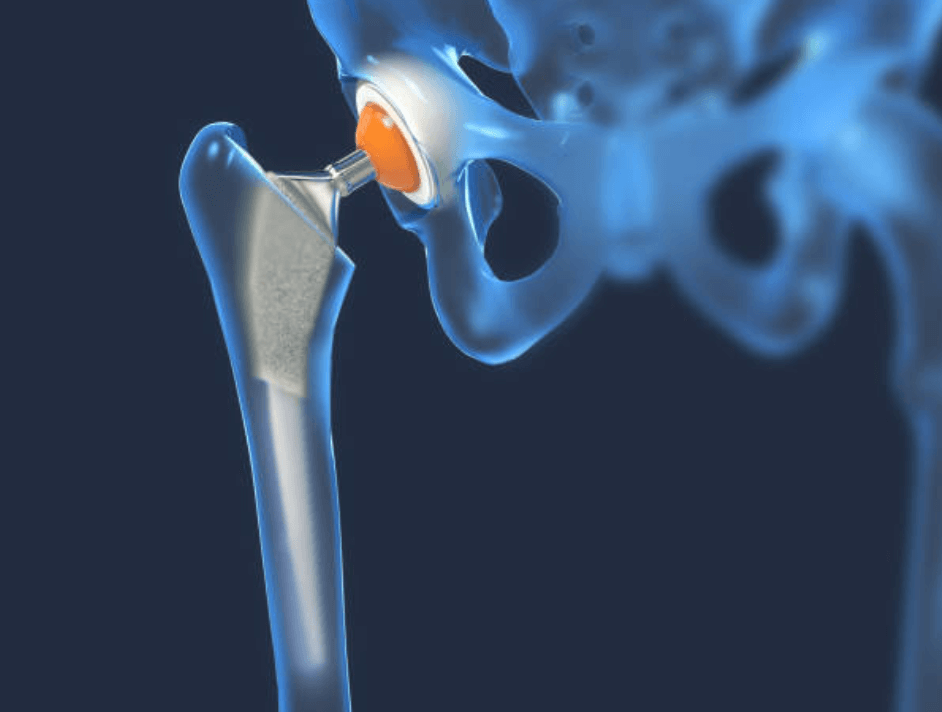A hip replacement, or hip arthroplasty, is a surgical operation carried out to reduce hip pain and allow movement of the legs. The surgery replaces parts of the hip joint or the whole joint with an artificial replacement hip.
A traditional whole hip replacement involves a single, large incision to the leg hip joint, displacing muscles, tendons, and ligaments. During a total hip replacement (total hip arthroplasty), both the ball and the socket are replaced. It is because of these deep incisions that there is a large recovery time for a hip operation.
Alternatively, parts of the hip can be replaced, using hip prosthesis, where the bone is repaired with bone cement and either an artificial pelvis socket, top of the femur or part of the bone, requiring less surgery. Either one side of the hip is replaced, or a double hip operation is provided.
How Do I Know If I Need a Hip Replacement?
The hip joint is a joint which links the pelvis to the thigh bone, and femur, in a ball and socket mechanism. It gives the skeleton legs mobility and bears body weight and therefore is one of the most solid and stable joints in the skeleton.
The hip joint is kept lubricated by the synovial fluid. This fluid is made up of hyaluronan, lubricin, proteinase, collagenases, and prostaglandins which provide lubrication, preventing friction in the joint. It enables you to be able to move your legs and bend and stretch to climb stairs and do basic activities and movements with your legs.
The hip joint pelvis and top of the femur are also covered in cartilage to help provide further lubrication and prevention of dynamic stress. Tissues called ligaments link the bones and tendons as well as bones to muscles, which allow for movement.
Osteoporosis is a condition which causes weak, easy-to-break brittle bones, putting an individual more at risk of hip fracture and degeneration. Osteoarthritis is when the cartilage around the joint begins to break down and the underlying bone changes. This causes joint stiffness, pain and swelling. It is worsened by weight gain and is more likely in women, the elderly and those with a relative with the condition. Both conditions are likely causes of hip pain.
Damage to the hip joint can occur as a result of a fracture, injury, ageing, overuse deterioration or also other conditions such as bone cancer. Arthritis can limit movement, as it can cause narrowing of the hip joint, hardening of the bone surface underneath the joint, causing small bony growths in the joint and cyst formation.
This damage can be detected with an X-ray. Both injury and arthritis can limit the movement of the hip joint and cause considerable pain and suffering. Often hip replacement surgery is needed to allow rotation, extension, and flexion of the hip joint and allow for movement of the legs.
What Is the Recovery Time for a Hip Replacement?
A partial hip replacement only replaces part of the hip, either the top of the ball of the femur (thigh bone) or the pelvis socket and replaces it with an artificial replacement. For this, muscles and tendons and ligaments are simply moved, and therefore they do not require a long recovery time and a small incision is used.
For some, this operation is not sufficient as there is too much damage to the hip joint, and therefore a more complex procedure is required which cuts through muscle and ligaments and tendons and requires a bigger incision. This comes at more risk of infection and the cut tissue will require considerably more rehabilitation for full recovery. The joint is also more at risk of dislocation because of the displaced tissue. This will require a longer recovery time.
Complete recovery takes 3-6 months for a hip replacement, with physiotherapy and occupational therapy.
Why Do People Have Hip Replacements?
A hip replacement can help a patient return to an improved quality of life, with less pain and more ability to move and be active. This can improve their mental and physical health and help them to do the things they enjoy. A damaged hip can make even basic day-to-day life harder or impossible.
Waiting lists for hip replacements on the NHS can be long, but the procedure can be done privately. The NHS will prioritise patients based on age and the severity of the hip damage. Those younger are often seen first for a hip replacement because the damage to the hip is often more severe and debilitating.
With the right medical team behind a patient, any patient can go on to have a normal quality of life following a hip replacement operation.


 71–75 Shelton Street, Covent Garden, London, WC2H 9JQ
71–75 Shelton Street, Covent Garden, London, WC2H 9JQ +44 (0) 20 3376 1032
+44 (0) 20 3376 1032



